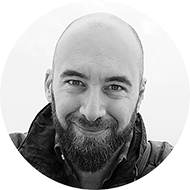![]()
All businesses that are selling digital products in the EU are affected by the MOSS legislation regarding VAT payments.
The Mini One Stop Shop (MOSS) came into force on 1 January 2015 and allows taxable persons supplying telecommunication services, television and radio broadcasting services and electronically supplied services to non-taxable persons in Member States in which they do not have an establishment to account for the VAT due on those supplies via a web-portal in the Member State in which they are identified.
This scheme is optional, and is a simplification measure following the change to the VAT place of supply rules, in that the supply takes place in the Member State of the customer, and not the Member State of the supplier. This scheme allows these taxable persons to avoid registering in each Member State of consumption. The mini One Stop Shop mirrors the scheme in place until 2015 for supplies of electronically supplied services to non-taxable persons by suppliers not established in the European Union.
In practice, under the scheme, a taxable person that is registered for the Mini One Stop Shop in a Member State (the Member State of Identification) electronically submits quarterly mini One Stop Shop VAT returns detailing supplies of telecommunications, broadcasting and electronically supplied services to non-taxable persons in other Member States (the Member State(s) of consumption), along with the VAT due. These returns, along with the VAT paid, are then transmitted by the Member State of Identification to the corresponding Member States of consumption via a secure communications network.
The Mini One Stop Shop VAT returns are additional to the VAT returns a taxable person renders to its Member State under its domestic VAT obligations.
The Mini One Stop Shop is available to taxable persons who are established in the EU (the Union scheme), as well as taxable persons which are not established within the EU (the nonUnion scheme). Without the mini One Stop Shop, the supplier would be required to register in each Member State in which he supplies services to his customers.
The Mini One Stop Shop scheme is optional for taxable persons. However, in choosing to use the mini One Stop Shop the taxable person must apply the scheme in all relevant Member States. It is not an optional scheme on an individual Member State basis.
More information about the new legislation can be found in this PDF document.
Also the following:
- HMRC’s excellent guide and flowchart
- Sitesell’s simple but comprehensive guide to the new VAT rules
- Digital Arts’ Guide to MOSS for creatives
- Guidelines for the VAT treatment of Electronically Supplied Goods
- Facebook EU VAT Group
- VAT MOSS Technical Implementation
- Info relevant to Malta
What is a digital product?
The European Commission has four criteria that will determine whether something is a digital product:
- It is not a physical, tangible good.
- It’s essentially based on IT. The offering could not exist without technology.
- It’s provided via the Internet or an electronic network.
- It’s fully automated or involves minimal human intervention.
You’re probably consuming and using digital products all day long, whether or not you realize it. Here are some common ones on the market today:
- E-books, images, movies, and videos, whether buying a copy from Shopify or using a service like Netflix. In tax language, these products are in a category usually called, “Audio, visual, or audio-visual products.”
- Downloadable and streaming music, whether buying an MP3 or using a service like SoundCloud or Spotify. Of course, these products also fall in the audio category.
- Cloud-based software and as-a-Service products, such as Software-as-a-Service (SaaS), Platform-as-a-Service (PaaS), and Infrastructure-as-a-Service (IaaS).
- Websites, site hosting services, and internet service providers.
- Online ads and affiliate marketing. Income from these services can be considered taxable under digital tax policies.
Heads up: you might also hear digital goods referred to as “digital services,” “e-goods,” or “e-services.” All of these terms refer to the same thing.
MOSS and Affiliate Payments
If you engage in affiliate marketing and promote other people’s products or services you get a commission for it. The marketer who pays you a commission is your customer. And if this marketer is an EU person, you may have to apply the MOSS VAT rules on these commissions.
Here’s how it works. First of all, affiliate commissions fall under ‘marketing services’. There was initially some debate on whether they are fully automated or not, but it seems that most VAT authorities are classifying it as an automated electronic service, hence falling under MOSS rules.
Here are a few scenarios.
- If you are provided with a VAT number, no VAT should be charged, applying reverse charge.
- If you receive affiliate income from non-EU, no VAT is charged.
- If you receive affiliate income from EU, without VAT number, since this is considered to be fully automated and electronic service, VAT should be charged at the location of the customer, and declared in MOSS.
In a domestic setting, as an affiliate, you would send an invoice to the business, which has to pay a commission to you. The invoice contains the commission amount plus the applicable VAT. The product owner, whose products you promote, then can claim back from tax authorities this VAT amount you invoiced.
Again, if you’re a European-based affiliate, and the company whose products you are promoting is also a VAT-registered business in the EU but in another country compared to yourself, you don’t need to charge them VAT. Both of you have a VAT number and this is a B2B transaction, so the reverse-charge mechanism is used.
Now there is a special case that merits some attention. Some businesses in the UK have revenues that fall below the VAT threshold and will therefore not be required to have a VAT number. This proves problematic to you as an affiliate if you are promoting the products of such a vendor.
Because of all the red tape involved and relative newness of the system, affiliate marketing plugins used by such vendors are not able to handle this new rule. At the end of the month, they will pay your commission without any consideration of VAT. If you contact them about the issue, they might decline your request to pay an extra amount of VAT to you and then to reclaim it from their government. So there is a good chance that you will have to pay it to the product owner’s government, but he will neither pay it to you nor demand it back from his government.
If they can’t modify their affiliate systems to handle this scenario, you might get them to pay you the extra VAT they owe you by generating an invoice yourself (including the VAT due) and sending it to them. Then they will forward you the due VAT amount in addition to the automatic affiliate payment already issued by their systems.
A common question among affiliates in Europe concerns the VAT MOSS rules and how they apply to affiliate income.
If you are a business providing affiliate marketing services to another European registered company that has a VAT number, there is no change. Since both are companies and both have a VAT number, there is no VAT charged in this B2B transaction.
The major doubt arises when you have companies or freelancers who are below the threshold for VAT registration in countries like the UK, so they don’t have a VAT number. If you are providing affiliate services to these companies or freelancers, you will need to charge VAT to them.
This can be quite annoying as many affiliate systems automatically pay affiliates every month, and they don’t have functionality for MOSS VAT built-in. So what you will need to do is inform the company that you will be issuing a monthly invoice to them with the VAT added on top of the referral income they owe you. They should not have any problem with this arrangement since that is what the law necessitates. If you don’t invoice them and obtain payment, you will be liable to pay the VAT yourself, which is not a good situation.
Now the second question relates to what VAT rate to use when charging advertisers. The answer is that you should use the VAT rate of the country where the advertiser is based. Hence we are using the MOSS VAT rules because affiliate income is classified as an automated digital service.
Hence if you are a Spanish affiliate for a UK-based product seller, and this UK seller does not have a VAT number, you need to charge him UK VAT at the end of the month when you obtain your affiliate payout. Then, you will need to declare the amount collected on your MOSS statement.
Preparing Invoices
Invoicing for affiliates can be a bit tricky. Affiliates themselves don’t usually invoice the product owners. As a blog owner, for example, you can be signed up to over 200 affiliate programs, so creating invoices every month for small amounts would be ridiculously time-consuming. I
Instead, what happens is that affiliate network platforms such as Shareasale, automatically create invoices for the product owners on behalf of the affiliates. That satisfies accounting requirements without adding overheads to the affiliates. It is important that the product owners obtain all the relevant details from their affiliates as this info will be automatically inserted into the invoices, which are a legal obligation to have in all jurisdictions in Europe as far as I know.





